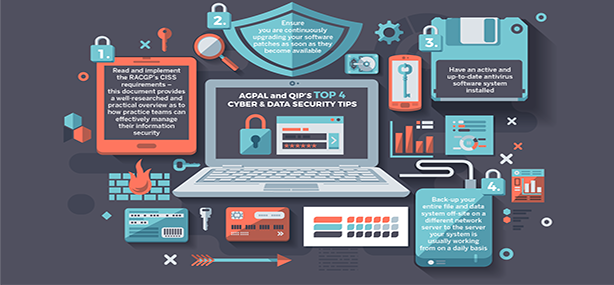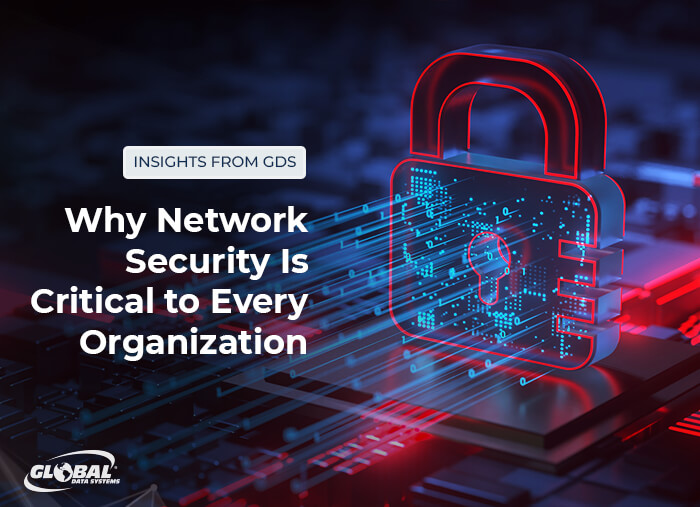Data and Network Security: Key Strategies to Safeguard Your Digital Infrastructure
Data and Network Security: Key Strategies to Safeguard Your Digital Infrastructure
Blog Article
Just How Information and Network Protection Secures Versus Arising Cyber Dangers
In an age marked by the rapid advancement of cyber hazards, the importance of information and network protection has never been much more pronounced. Organizations are significantly reliant on innovative safety and security steps such as security, access controls, and positive monitoring to safeguard their digital assets. As these dangers come to be extra complicated, comprehending the interaction between data safety and security and network defenses is crucial for alleviating risks. This conversation intends to discover the essential parts that fortify a company's cybersecurity position and the methods required to remain ahead of prospective vulnerabilities. What stays to be seen, however, is just how these measures will certainly evolve in the face of future challenges.
Comprehending Cyber Dangers

The ever-evolving nature of innovation continuously introduces brand-new susceptabilities, making it important for stakeholders to stay cautious. People might unknowingly succumb social design tactics, where assaulters control them into divulging delicate details. Organizations face one-of-a-kind difficulties, as cybercriminals commonly target them to make use of beneficial data or disrupt operations.
Furthermore, the increase of the Web of Points (IoT) has increased the attack surface, as interconnected gadgets can act as entrance points for assailants. Acknowledging the relevance of durable cybersecurity techniques is critical for alleviating these risks. By cultivating a detailed understanding of cyber individuals, dangers and companies can apply effective strategies to safeguard their digital properties, making certain strength in the face of an increasingly complicated threat landscape.
Secret Components of Data Safety And Security
Ensuring data protection calls for a multifaceted strategy that includes various key parts. One fundamental element is data security, which changes delicate details into an unreadable style, available only to authorized users with the appropriate decryption keys. This works as a crucial line of protection versus unapproved accessibility.
One more vital component is access control, which controls who can see or control information. By implementing strict individual verification protocols and role-based gain access to controls, companies can minimize the threat of expert risks and data breaches.

Furthermore, data masking strategies can be used to safeguard sensitive information while still permitting for its usage in non-production settings, such as testing and development. fft perimeter intrusion solutions.
Network Protection Techniques
Carrying out robust network protection techniques is important for guarding an organization's digital framework. These methods entail a multi-layered technique that includes both equipment and software application services developed to secure the honesty, discretion, and availability of data.
One vital element of network safety and security is the deployment of firewall softwares, which act as an obstacle in between relied on interior networks and untrusted exterior networks. Firewall softwares can be hardware-based, software-based, or a combination of both, and they help filter outbound and inbound traffic based on predefined safety and security regulations.
Furthermore, invasion discovery and avoidance systems (IDPS) play a vital duty in checking network web traffic for suspicious tasks. These systems can inform administrators to possible violations and do something about it to mitigate threats in real-time. Regularly upgrading and patching software application is likewise important, as susceptabilities can be exploited by cybercriminals.
Furthermore, executing Virtual Private Networks (VPNs) makes certain safe remote accessibility, encrypting data transferred over public networks. Segmenting networks can decrease the assault surface and include prospective violations, restricting their influence on the overall facilities. By taking on these techniques, organizations can efficiently fortify their networks versus emerging cyber threats.
Best Practices for Organizations
Establishing best techniques for organizations is critical in maintaining a strong safety and security why not try here pose. An extensive method to information and network safety begins with routine risk analyses to recognize vulnerabilities and prospective hazards. Organizations needs to implement robust access controls, making certain that just accredited personnel can access sensitive data and systems. Multi-factor authentication (MFA) need to be a common need to boost safety layers.
Additionally, continuous staff member training and recognition programs are crucial. Employees should be educated on recognizing phishing attempts, social engineering methods, and the relevance of adhering to security protocols. Regular updates and patch monitoring for software program and systems are also vital to secure versus understood vulnerabilities.
Organizations should establish and check occurrence feedback plans to ensure readiness for possible violations. This consists of developing clear communication channels and roles throughout a safety case. Furthermore, data security should be employed both at rest and in transportation to safeguard delicate info.
Finally, conducting regular audits and conformity checks will aid make certain adherence to recognized plans and pertinent policies - fft perimeter intrusion solutions. By adhering to these ideal methods, companies can substantially enhance their resilience versus emerging cyber threats and safeguard their crucial assets
Future Trends in Cybersecurity
As companies navigate a progressively complex electronic landscape, the future of cybersecurity is positioned to progress considerably, driven by shifting and emerging technologies hazard paradigms. One noticeable trend is the integration of man-made intelligence (AI) and artificial intelligence (ML) into security structures, enabling real-time threat discovery and feedback automation. These modern technologies can examine huge quantities of information to determine abnormalities and potential breaches a lot more effectively than traditional methods.
One more critical pattern is the surge of zero-trust design, which requires continuous verification of user identities and device protection, regardless of their place. This method decreases the risk of expert dangers and enhances security against outside attacks.
Furthermore, the enhancing fostering of moved here cloud services necessitates durable cloud protection strategies that attend to one-of-a-kind susceptabilities connected with cloud environments. As remote work becomes a permanent fixture, securing endpoints will certainly additionally come to be vital, resulting in an elevated focus on endpoint detection and feedback (EDR) services.
Finally, regulative conformity will certainly continue to form cybersecurity methods, pressing companies to embrace extra stringent information defense actions. Embracing these fads will be essential for companies to strengthen their defenses and browse the evolving landscape of cyber hazards effectively.
Final Thought
In final thought, the application of durable information and network security measures is crucial for organizations to protect versus emerging cyber hazards. By utilizing security, accessibility control, and efficient network safety techniques, companies can substantially decrease vulnerabilities and safeguard delicate information. Taking on ideal practices further improves durability, preparing organizations to encounter developing cyber difficulties. As cybersecurity proceeds to develop, remaining notified regarding future patterns will certainly be vital in keeping a solid protection against prospective risks.
In an age marked by the rapid advancement of cyber dangers, the relevance of data and network security has never been much more obvious. As these risks end up being more complex, recognizing the interaction between information safety and security and network defenses is essential for reducing risks. Cyber risks incorporate a broad array of destructive activities aimed at endangering the privacy, stability, click reference and availability of networks and information. A thorough strategy to information and network security starts with normal risk analyses to identify susceptabilities and possible risks.In conclusion, the execution of durable data and network security actions is vital for organizations to secure versus arising cyber dangers.
Report this page